Retreats
Many years ago, at the request of a friend—the harried chair of the Christian Education Committee at our Presbyterian church—I prepared and taught an adult class on the theology of C.S. Lewis. (“You’re always talking about him; can you teach him?”)
That class proved to be so popular that first the Methodists and then the Episcopalians asked me to repeat it for their congregations.
That led to leading week-long summer seminars on C.S. Lewis and the religious imagination at Ghost Ranch, a conference center in northern New Mexico (and eventually at other places).
And that led to my wanting to be trained in spiritual direction, as reflecting on Lewis’ life and work tends to bring up deep-seated (and sometimes deeply buried) matters of faith and doubt and prayer in many people. I was honored to be asked to help address these questions one-on-one, but I knew myself to be ill-equipped to do so.
So my work learning about and offering spiritual direction and conducting retreats grew organically by a kind of cell division from that one class—as that class grew quite naturally from my lifelong love of Lewis.
From the beginning, reading and writing and praying and teaching and guiding others in prayer have been inextricably woven together in my life—an unsought gift and calling for which I am profoundly grateful.
I have, over the years, been invited to lead retreats for parishes, dioceses, women’s groups, clergy, as well as boards of deacons, sessions and vestries. Some of the retreats that have meant a lot to me and have appeared to prove helpful to others are described here, in order to encourage interest in the subjects and to suggest directions for the kind of explorations they involve.
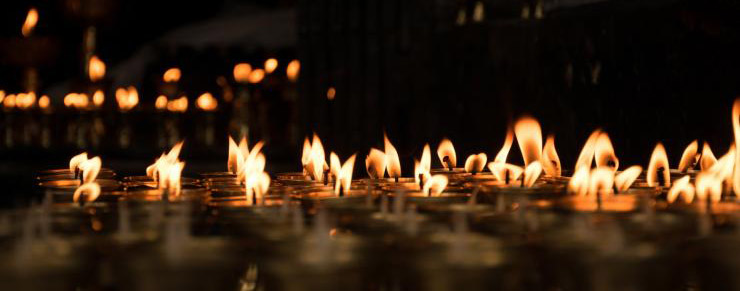
Deep Peace and High Anxiety: “Pray, Love, Remember”
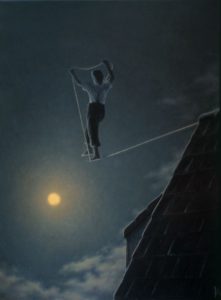
We all live in what the poet W.H. Auden called the “age of anxiety.” But we are also invited into the peace of God, a peace so radical that it “passes all understanding.”
How can we get from here to there? Without denying the power of what we fear, how can we learn to live in trust and hope?
This retreat uses Scripture and poetry, as well as insights from psychology and art and the lives of the saints, to explore ways we might loosen the grip of worry on our lives, and enlarge our faith that we might hold our anxieties both more lightly and from a deeper place.
New Testament Encounters with Jesus: “And Also Some Women”
From the beginning of Jesus’ life, throughout his ministry, at his Crucifixion and Resurrection, women were not just present but central: swift in response, steadfast in support, courageous in witness—“first at the Cradle and the last at the Cross” (as Dorothy Sayers put it).
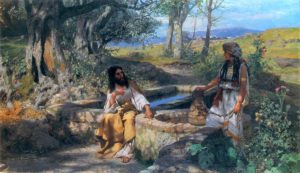 The scriptural witness to these—often nameless—women is a rich resource for our study and reflection. These women whom Jesus touched and called and sent can be powerful companions on our own journeys—as Jesus ever more deeply heals and calls and sends us, too.
The scriptural witness to these—often nameless—women is a rich resource for our study and reflection. These women whom Jesus touched and called and sent can be powerful companions on our own journeys—as Jesus ever more deeply heals and calls and sends us, too.
Join us as we explore these women’s stories and listen for the ways God is telling us our own.
Now the Green Blade Rises: Recognizing Resurrection
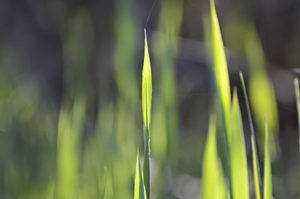 The Crucifixion and Resurrection of our Lord are at the heart of our faith; we are an Easter people. Unlike Gnosticism, Christianity proclaims that death (not the body) is the “last enemy” and that Jesus, dying, has destroyed our death.
The Crucifixion and Resurrection of our Lord are at the heart of our faith; we are an Easter people. Unlike Gnosticism, Christianity proclaims that death (not the body) is the “last enemy” and that Jesus, dying, has destroyed our death.
However, our secular culture vastly prefers self-improvement to self-offering, and affirms a vague notion of spiritual immortality rather than the darker but infinitely more powerful promise of death and rebirth by the power of God alone.
These largely unexamined attitudes have infiltrated even the Church and its liturgies, to the impoverishment of our lives in God. As a consequence, we are in danger of no longer recognizing resurrection in our own experience, or the presence of our Risen Lord in our broken world, or the real “weight of glory” our faith offers for “the life of the world to come.” We are also at risk of missing God’s invitation to us to participate in the New Creation inaugurated with Christ’s Resurrection. Using a three-part structure based on the liturgical affirmation “Christ has died; Christ is risen; Christ will come again,” this retreat explores the mysteries of death and resurrection using Scripture, poetry, art and science in order to reclaim—and rejoice in—orthodox Christian teaching on the resurrection of the body.
Epiphany: Beyond the Magi
 When we think of “Epiphany” we tend to think of the day that marks the end of the twelve days of Christmas—commemorating the Magi who were led by a mysterious star to worship the Christ Child.
When we think of “Epiphany” we tend to think of the day that marks the end of the twelve days of Christmas—commemorating the Magi who were led by a mysterious star to worship the Christ Child.
Traditionally however Epiphany was not just a day but its own liturgical season—“Epiphanytide”—linking the Nativity with the Passion and able to deepen our appreciation of the Incarnation.
The readings for this little season of Epiphany (meaning “revelation” or “manifestation” of God) focus not just on the biblical story of the Magi and the star but also on two other manifestations of God in Jesus’ life: his baptism by John and the miracle of water turned to wine at the wedding at Cana.
What do these three ancient stories—of starlight, water and wine—tell us about God? What clues do they hold to help us find God on our own journeys?
This quiet day, falling within Epiphanytide, uses art and poetry and scripture to unpack the riches of the tradition—and explore our own experience of God-with-us.
Evelyn Underhill and the “Mysticism of Ordinary Life”
![]() Evelyn Underhill has long been recognized as a pioneer in the retreat movement in the Church of England, and as a highly regarded spiritual director and writer. The author of more than twenty-five books, she was the English language’s most widely read writer on prayer, contemplation, spirituality, worship and mysticism in the first half of the 20th century.
Evelyn Underhill has long been recognized as a pioneer in the retreat movement in the Church of England, and as a highly regarded spiritual director and writer. The author of more than twenty-five books, she was the English language’s most widely read writer on prayer, contemplation, spirituality, worship and mysticism in the first half of the 20th century.
That is the outward, public face of her life and work.
What we explore in this quiet day is the more private aspect of her faith journey—the remarkable way her own spiritual growth, lived out in the context of her “ordinary life,” followed the pattern of the mystic’s development outlined in her most famous scholarly work Mysticism about the soul’s movement from restless surface to quiet depth, to reemerge in heroic “divine fecundity.”
We also compare the shape of this inner journey with the 11th century Camaldolese Benedictine wisdom of the “three-fold good” of the monastic life (experienced as monk in community, hermit in solitude, missionary in the world) and ponder how our own God-ward paths might be seen in that light.
Deepening Prayer
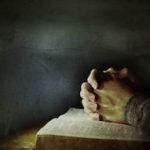 After many years of experimenting with various schools of meditation and prayer “techniques,” I have come to value four aspects of the spiritual life as indispensable: awareness of and reliance on the “great cloud of witnesses” who are our ancestors in faith; gratitude as primary; intercession as mystical union; and a prayer that is above all an awareness of the inestimable gift of God-with-us, with no words at all.
After many years of experimenting with various schools of meditation and prayer “techniques,” I have come to value four aspects of the spiritual life as indispensable: awareness of and reliance on the “great cloud of witnesses” who are our ancestors in faith; gratitude as primary; intercession as mystical union; and a prayer that is above all an awareness of the inestimable gift of God-with-us, with no words at all.
This retreat explores those four values in four sessions using Scripture, poetry, art, and journaling:
- Blessed Communion: Praying with All the Company of Heaven
- Thanks Be to God: Gratitude as a Spiritual Discipline
- Close to the Heart of God: Intercession as a Contemplative Practice
- Too Deep for Words: Silence After All